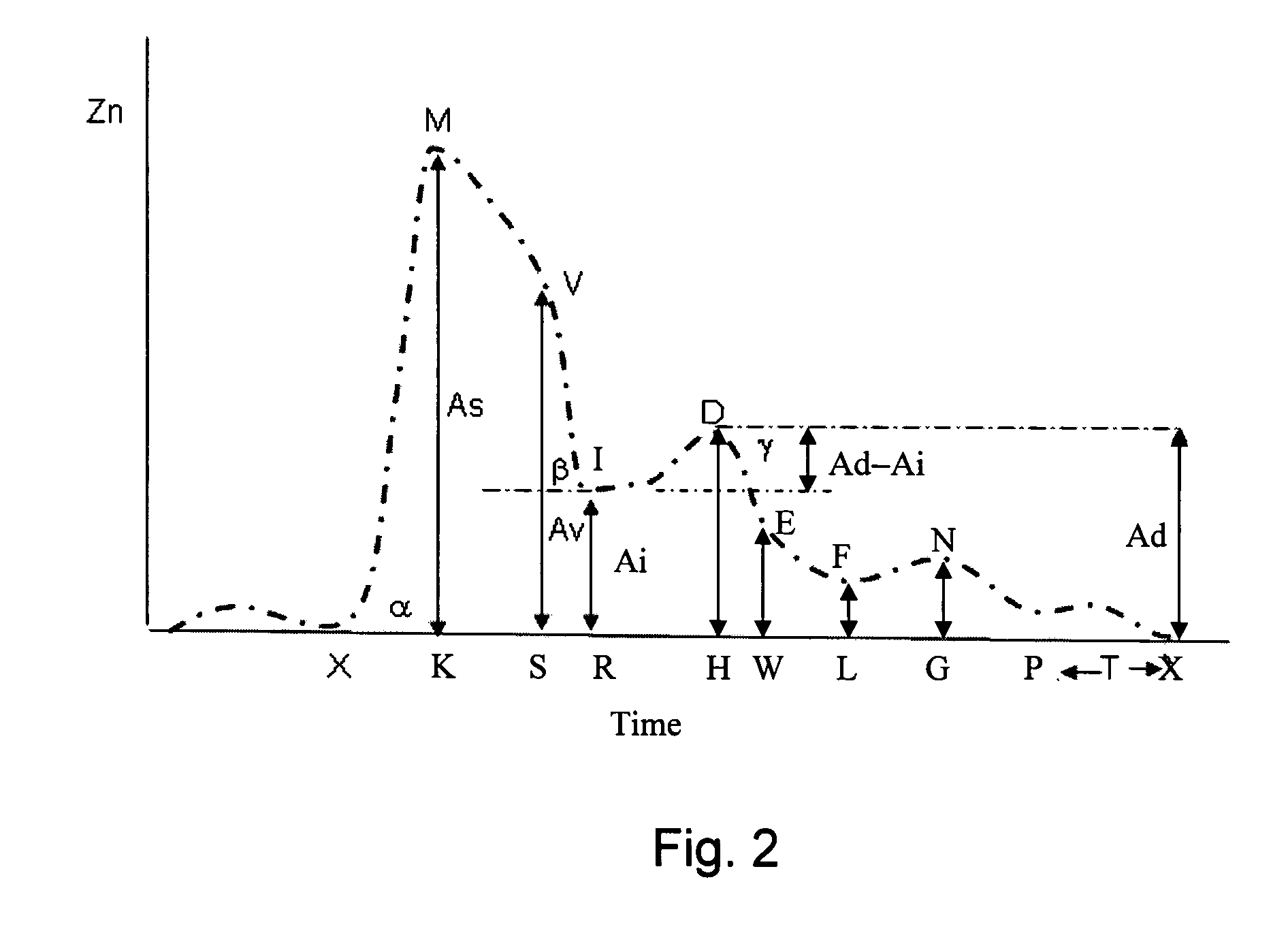Non-Invasive Glucose Monitoring
a glucose level monitoring and non-invasive technology, applied in the field of glucose monitoring, can solve the problems of increasing the risk of tissue damage and organ damage, hypoglycemic subjects are in danger of developing tissue damage in blood vessels, eyes, kidneys, nerves, etc., and achieve accurate and reliable non-invasive glucose level monitoring
- Summary
- Abstract
- Description
- Claims
- Application Information
AI Technical Summary
Benefits of technology
Problems solved by technology
Method used
Image
Examples
example 1
Determination of Subject-Specific Correlation Function
[0149]The teachings of the present embodiments have been used for determining subject-specific correlation functions in three different subjects.
Methods
[0150]The following protocol was used for each subject:
[0151](i) 10 measurements of glucose levels were taken invasively using FreeStyle™ blood glucose monitoring system. The measurements were taken before and after meals, at intervals of 10-20 minutes between consecutive measurements. The obtained glucose levels were recorded as the reference glucose history of the subject.
[0152](ii) Electrical impedance was measured on the wrist of the subject. 10 cycles of measurements were performed synchronously with the invasive glucose level measurements. For each cycle of electrical impedance measurements, the time-dependence of the electrical impedance was obtained over a heart-beat cycle. Thus, a 10 time-dependence of the electrical impedance were obtained.
[0153](iii) For each time-depen...
example 2
Clinical Trials
[0180]A clinical study was performed on 16 adult subjects at Assaf Harofe Medical Center, Israel.
Methods
[0181]For each subject, a reference glucose history was recorded at least once and a corresponding subject-specific correlation function was determined according to the teachings of preferred embodiments of the present invention. The predetermined criterion for the calculation of the subject-specific correlation function was that no more than two values of the correlation function will deviate from the reference glucose history of the subject under study by more than 20%. One subject, for which the criterion was not satisfied, was rejected.
[0182]Data were acquired from the remaining 15 subjects: 4 diabetics of ages 60-65 (3 males, 1 female), 5 healthy adults of ages 26-32 (3 males, 2 females) and 6 healthy adults of ages 55-65 (3 males, 3 females).
[0183]For each subject, reference blood glucose levels were obtained invasively using FreeStyle™ blood glucose monitorin...
PUM
 Login to View More
Login to View More Abstract
Description
Claims
Application Information
 Login to View More
Login to View More - R&D
- Intellectual Property
- Life Sciences
- Materials
- Tech Scout
- Unparalleled Data Quality
- Higher Quality Content
- 60% Fewer Hallucinations
Browse by: Latest US Patents, China's latest patents, Technical Efficacy Thesaurus, Application Domain, Technology Topic, Popular Technical Reports.
© 2025 PatSnap. All rights reserved.Legal|Privacy policy|Modern Slavery Act Transparency Statement|Sitemap|About US| Contact US: help@patsnap.com



